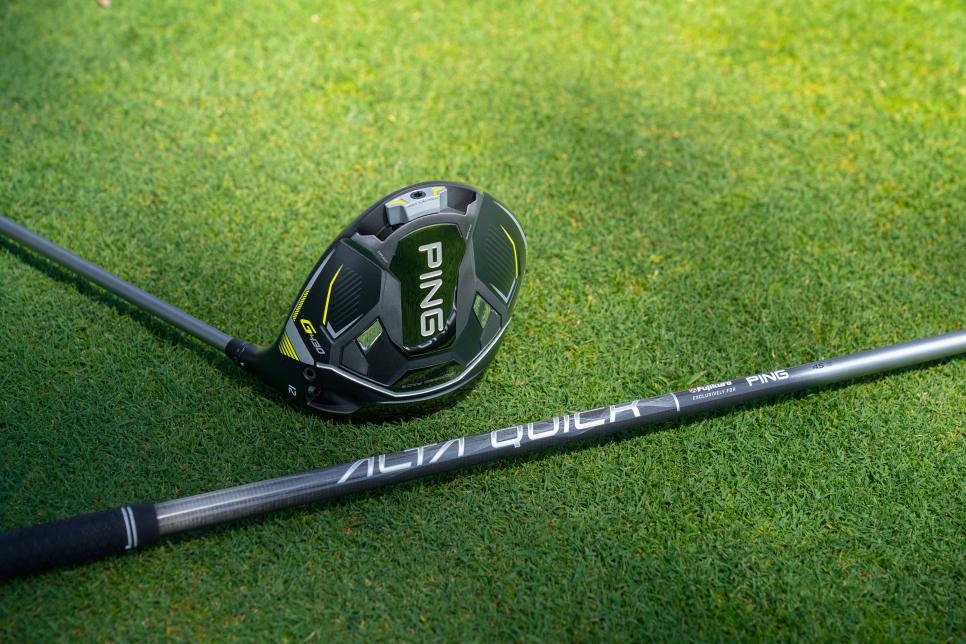New Clubs
Ping G430 drivers: What you need to know

WHAT YOU NEED TO KNOW: The new G430 driver family, which includes the neutral flight, ultra-forgiving Max, the increasingly draw-biased SFT and the compact, low-spinning LST, continues the company’s theme of forgiveness. These drivers put more weight in the extreme perimeter but also feature thinner, more forgiving faces, as well.
PRICE: G430 Max ($600; 9, 10.5, 12, also in HL version); G430 SFT ($600, 10.5, also in HL version); G430 LST ($630, 9, 10.5). Available for pre-order, arrives in stores Jan. 26.

3 COOL THINGS
1. A new way to make your mis-hits more consistent. Yes, there’s plenty of weight at the back end of these drivers (see below) for better stability, but the face is Ping’s most intriguing in some time. First, while the T9S+ titanium alloy in the face is selectively thinner, that’s not the full story on its distance improvements, said Ryan Stokke, Ping’s director of product design. The face works better because other areas around it were dialed in to support it better, including the overall thickness of the face, the height of the face and its variable thickness design. “The interesting thing is we're actually not deflecting the face more, but we're transferring more energy to the ball,” he said.
Another key to better forgiveness in the face is changing the curvature from crown to sole. By reducing the amount of loft lower on the face, shots launch with less spin. That leads to not only less distance loss for those mis-hits but more consistent spin and ball speed for hits low, high and on center. “We're basically able to flatline or neutralize the spin difference from sole to crown,” Stokke said. “And then we’re also getting the secondary benefit, which is as you do make impact lower on the face, you are getting more ball speed because of the lower loft.”

2. Let’s not forget the bread and butter. Ping has been all in on forgiveness since Karsten Solheim founded the company 64 years ago, so these drivers haven’t abandoned the benefits of perimeter weighting. In fact, the movable tungsten weight in the rear perimeter is now 25 grams (22 grams on the LST and SFT models), and the track is shorter so the weight stays more centralized to aid in stability while still accommodating fade and draw settings. On the slice-fighting SFT model, the weight track is shorter still and more heel-biased. It accommodates two positions, Draw and Draw Plus. Stokke said the former corrects an average of 13 yards of a miss to the right, while the latter nets out a 20-yard fix.
Even the better player LST breaks new ground in forgiveness by employing an ultra-thin carbon composite cap that covers the back half of the crown and wraps around the rear and sides. It saves 10 grams to further lower the center of gravity and increase moment of inertia (stability on off-center hits). As a percentage gain, Stokke said the G430 LST has shown a higher improvement in MOI compared to the G425 LST than either the Max or SFT versions did compared to their predecessors.

3. Ping adds a fourth (or fifth) option to its driver lineup. Stokke and team spent a great deal of time understanding how to improve the face design and weighting of the company’s traditional three models in distinct ways, even studying how the different impact patterns of a slice-fighting SFT player would necessitate a different design than the more centered pattern of an elite-level LST player. The adjustable weight track and the center of gravity on the SFT is actually less toward the heel side than previous versions, he said. “What we did was we actually just brought the total club weight down and the swing weight down, as well,” he said. “So it’s lighter with a more neutral CG, but it's still producing the same kind of draw effect. By not having the CG as far to the heel side, it actually is leading to more efficient impacts.”
Meanwhile, the G430 LST is a more compact head with lower spin and a slight bias toward fading the ball. The meat of the lineup will again be the G430 Max, which produces a more neutral flight. The draw and fade positions in the rear perimeter weight track move ball flight approximately eight yards, Stokke said.

The big story is the addition of an HL option that can be built for both the G430 Max or G430 SFT models. By reducing the size of the sliding weight to just 11 grams and changing to the ultralight, sub-45-gram Alta Quick shaft, the HL versions are 15 percent lighter in total weight. “Getting that dialed in you can see a player go from being someone who says, ‘I've hit the same driver distance for the last 10 years’ to ‘I just added 5 to 10 yards’ by getting them a better equipped overall club,” Stokke said.

